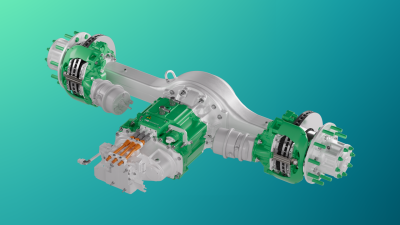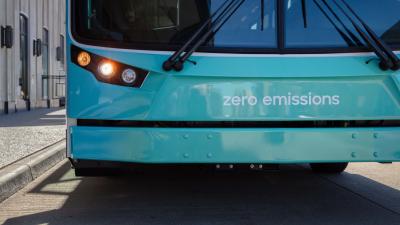Electrolyzers
Mixed reality meets the clean energy sector with the Accelera™ HyLYZER-5000 electrolyzer
A 3-D architect, an experience designer and a Cummins product engineer walk into a lab. What happens next? They create the first Accelera™ by Cummins mixed-reality demo for electrolyzer technology.
At a recent event, attendees were invited to take an immersive tour of the HyLYZER®-5000 — the newest and currently largest Accelera™ water electrolyzer system. Using a Microsoft HoloLens 2 headset, users experienced a “doll house” view of the product, learning about its key components before being teleported to a HyLYZER hydrogen production facility. There, they viewed the product within a 1 to 1 real-scale ratio.
For Accelera, mixed reality is an exciting tool that brings the designing and planning of various clean energy technologies to life - giving stakeholders an up-close look at what’s being manufactured now and what new products will look like in the future. It’s a way to showcase its commitment to sustainability in a more realistic and effective way than 3D designs do alone.
The HyLYZER®-5000 gets digitally copied
So, how do you digitally copy a giant electrolyzer system anyway? It starts with gathering the right team, says Kieran Asare Bediako, a product engineer for power systems at Cummins.
“We had our CAD expert Atul S. Datar, electrolyzer configuration expert Spurgeon Jalli, electrolyzer engineer expert Neminath Chogule, and the chief 3D architect and lead experience designer from Altoura,” Kieran explains. “It truly was a mix of people with different backgrounds to complete this project, which was in such a short time frame. Three weeks from beginning to end.”
In those short three weeks, the team created a visual representation of the HyLYZER technical design. Features like lighting and material textures were carefully crafted to make the experience feel real, but omitting some details was needed to reach the three-week deadline.
“Initially, we used random colors to distinguish different components of the module in the electrolyzer system. Somehow, the color pink was used a lot, which was pretty amusing,” says Kieran. “We ended up aligning the color schematics of our virtual models with those created by marketing for customer presentations. So now it’s pretty similar to what the real thing will look like when we start production.”
In the end, the diverse team delivered. The HyLYZER®-5000 mixed reality demo is now highly interactive, where users can tap on the 3D model to project technical information. This gives users a basic understanding of the different components and how they work. And with a real-scale view, users can walk around the production facility as if it were right in front of them.
Take a look at the Accelera HyLYZER 5000 mixed reality demo:
The future of mixed reality and clean energy technology
Clean energy demos are just the beginning of the brand’s experimentation with mixed reality. The technology provides a versatile range of uses where knowledge can be transferred quickly, which is crucial in a rapidly changing industry. From speeding up the learning process for workers to reducing errors while drawing plant layouts, mixed reality offers new ways to improve productivity and the customer experience in the clean energy space.
Training for frontline workers
Mixed reality can combine auditory, visual and written techniques to cater to different learning styles and improve training procedures. For example, using holograms to show key assembly processes and fitment techniques while narration gives workers detailed instructions. Keywords and labels can be highlighted above physical objects to provide additional context. Using this approach will enable Accelera to standardize training globally and provide the same level of quality during each training session.
Customer site product installations
Wouldn’t it be great to view product installations at a site before purchasing? Mixed reality will make it possible. Virtual “fit checks” will ensure Accelera customers make the correct installment decisions before a product is delivered, saving them valuable time and resources.
Remote communication between SMEs and service engineers
Access to vital information in remote locations can be difficult, and the cost of sending experts for customer support can get expensive. The solution could be mixed reality, where a single individual at a remote site transfers information with a subject matter expert in real-time using a headset.
New site and facility planning
By bringing virtual designs to life in the physical world, mixed reality can validate the accuracy of plant layouts and reduce errors. Dimensional differences can also be recorded between the virtual and physical designs with headset sensors — enabling engineers to go back into 3D models and make necessary adjustments. The time to plan new facility layouts will be greatly reduced, along with reduced costs due to fewer errors.
“We’re looking forward to exploring the full potential of this technology across the business,” says Kieran. “Our goal is to make the world a better place through clean energy technology, and mixed reality can help us show people how to achieve it.”


